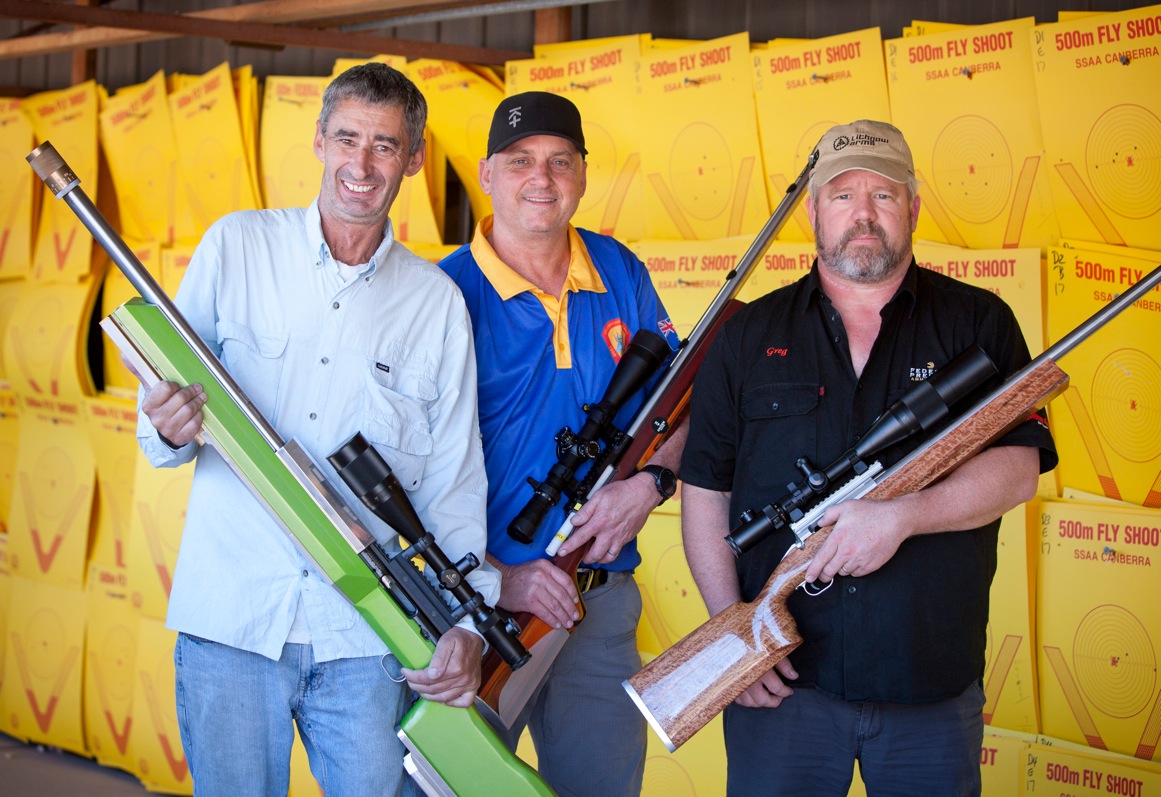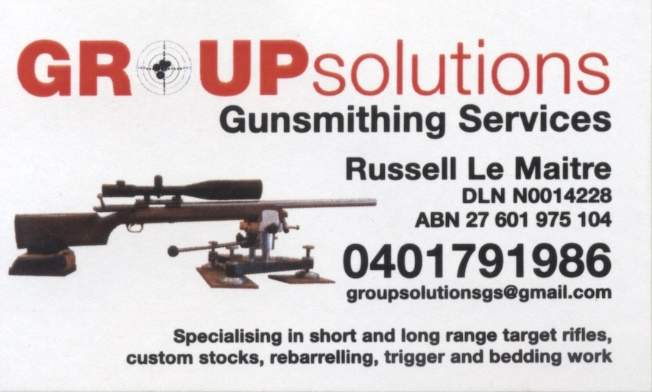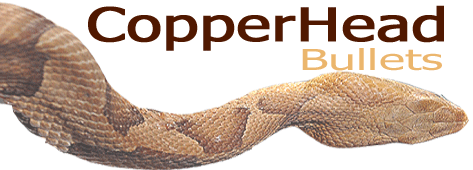G’day to all you Fly Shooters. By now it’s likely we are all starting to emerge from our Covid-induced cocoons. With some luck and good management, we might even get a shoot in sometime soon!
It’s been a good while now since an individual shooter has been profiled in this section of our website and I’m thinking it’s well and truly about time we featured another.
The reason for this delay certainly hasn’t been because of a lack of prospective stories, there are, after all, many, great things happening in our Fly Shooting world. It’s simply that I’m inherently lazy, lacking in motivation, and I needed a shot in the arm to get me thinking.
Our National Championships held recently at the Majura Range in Canberra did indeed provide that motivation.
We saw some remarkable shooting by many competitors over three days of intensive competition. The spotlight shone brightly on many individuals with high-scoring targets and small groups being consistently shot up and down the firing line over the full three days.
It’s true there were many impressive individual efforts but that spotlight surely shone brightest on one individual and he was of course the gentleman who shot the highest score on both day 1 in the heavy rifle category and then backed it up on day 2 by cleaning up in the light rifle category as well.
Anthony Bending, whom most of us know as “Jacko” or if you’re close personally maybe “Wacko Jacko” and in years gone past “young Sid”, was the man of the moment.
To compete in our national championships against the best shooters in the country and be victorious in any category is an enormous achievement. Competing and winning in two categories is massive. For Jacko, it was surely a dream come true and I think it’s fair to say he was the envy of every shooter at the match.

Who then is “Jacko”? What is his history and what makes him tick?
Me as an amateur writer, I can say that getting into the mind of a complex character like “Jacko” was a very interesting task indeed. It’s a pretty scary place to visit (Jacko’s mind) but I will also say if you read this article and keep your own mind open you will most likely understand a lot more about what it takes to shoot competitively, regardless of how much you knew or thought you knew!!
So here we go.
He’s been a familiar face around the various shooting circles for a long time now, probably 23-24 years. You know the bloke, dark hair, sharp features with a lean physique, walking with a spring in his step and pretty much always in the possession of a big “heavy” gun of some description. Jacko has been at many Fly matches over the years but has shot successfully at all the long-range events on offer in Australia. He loves the 1000-yard Benchrest and F-Class as well as the Fly!
Jacko’s beginnings in shooting probably mirror most of us. As a very young boy, in his hometown of Beaufort Vic, his father would take him rabbit hunting. By age 12 he would regularly go out on his own with his trusty .22.
At 15 years of age he decided to “power up” when he purchased a .220 swift from the local policeman. This was funded, mostly, by selling the shot rabbits in the local pubs. It didn’t take long for the barrel to expire so he had a gunsmith, Bill Hambly-Clarke, who Jacko had read about, re-barrel it in Ackley Swift. Hambly-Clark had a big reputation and was regarded by his peers as one of the finest custom rifle makers Australia had produced.
At this point, it needs to be said that Jacko lived and breathed shooting and fishing. Despite his youth, he had an inquiring mind and was an avid reader and accumulator of information enabling him to confidently approach “experts” in the field and to speak their language.
He clearly remembers the new barrel arriving in the post and the excitement that came with it!
This was the beginning of a lifelong quest for long-range accuracy.
Predictably for a .220 Swift Ackley this new barrel became old quite quickly so in 1997 he met up with David Kerr a gunsmith from Bundoora in Melbourne hoping to obtain another barrel.
Kerr was referred by Hambly-Clark as Clark had moved to Broken Hill and was unavailable. On the wall of David’s workshop was a Fly target he had shot with a 6mm x .284. Jacko remembers being in awe of this. He even remembers the score of 52.01, so that’s what he had Kerr chamber his new barrel in, a 6mm x .284 on his Ruger varmint rifle.
Not long after, he shot his 1st match, a club shoot at Little River and he was hooked. Kerr allowed Jacko to squeeze of a few rounds from his 7mm Rem Magnum “heavy” gun and this was the catalyst for a long-standing love-hate (mainly love) relationship with “heavy” rifles.
Two weeks later he met David at a shot show in Melbourne where he selected a case , an 8x68s and a bullet, the 162 7mm hornady and requested David to build a rifle to his specifications. Kerr queried his choice but agreed to the build.
For Jacko, this was the beginning of a “wonderful” relationship with Kerr a man who holds degrees in astrology, chemical engineering, aerodynamics and others. Jacko describes him as a super intelligent and gentle bloke and a very dear friend.
The rifle was a concept gun. A sleeved steel Remington action, a Maddco 1-10 twist 1.5” diameter 30 “ barrel, a Jewell trigger, a 12-42 night force scope chambered in the 7mm “Jacko” (7mm x 68s) with David’s laminated stock weighing in at 58lbs in total.
Since that rifle Jacko has owned and shot rifles chambered in 6 BR, 6 BRDX, 6mm BRA (short lived), 6mm x 284, 6.5 x 284, 284 Ackley, 7mm Saum, 7mm Saum Ackley, 7mm x 300 WSM Ackley, 7mm Jacko, 7mm x 68s Ackley, 7mm Jade, 7mm x 375 Ultramag Ackley, 300WSM, 338 Jacko, 338 x 375 Ultamag Ackley to name a few!
The amount of accumulated experience with all these calibers is enormous.
When asked, ‘Do you think of yourself as an experimenter’? He says, ‘Yeah, I suppose so Belly, really, I just can’t help myself’.
When asked, ‘Do you think of yourself as a heavy gun specialist’? He says, ‘Not a specialist, I’ve just done a lot of experimenting and burned out more barrels than I care to admit, so yeah, I reckon I now know what works and I’ve got a pretty good idea why!’
When asked, ‘Do you prefer Heavies’? He says ‘Yeah I do, most definitely, they’re temperamental bloody things so they certainly challenge you a lot which is a big part of the whole thing, if it was easy it would be boring wouldn’t it’? ‘Plus, I hate recoil and I love big cases so the weight of these heavy rifles helps to absorb that recoil’.
Over the years we’ve all seen Jacko turn up to the range with some weird and wonderful bits of kit.
He will often manufacture his own “heavy” stocks and rests. Why? Because he’s on a budget, but mainly because he can control the tolerances. He learnt a little about tooling at tech school when he was younger but has taught himself, over the years, more than school did.
He has a mate who will do his lathe work to his designs (for his rests) and he has his own mill with which he can make his own stocks.
Stock design is extremely important to Jacko. He believes that “most” commercial stocks suffer, to some degree, from tracking problems. Rifle “imbalance” will exaggerate poor tracking. He believes the optimum balance point on most rifles will be about 2.5” in front of the action. By designing and building your stock to match the barreled action rather than the other way around, this balance point can be controlled very accurately.
Jacko reckons a quality stock really needs to be straight and true in every way, ‘and many just aren’t’! ‘You’ll sometimes find the action inletting isn’t exactly square to the stock lines which leaves you with a barrel line crossing the stock line,..so..no good for accuracy’. Jacko believes many stocks are either too stiff or not stiff enough in relation to front and rear bag packing. He reckons this is an area where all shooters can easily have a play and it’s one of the MOST important aspects of accurate shooting. ‘If your bags are packed too hard the rifle could bounce, too soft and it will move around’. ‘Bags and stock need to work in harmony’. ‘Using a bag filler that settles easily but doesn’t set like concrete is the go’. ‘I use 40 grit Garnet (this is a heavy sand used when sand blasting)’. ‘On my heavy rifles I aim to get at least 8 shots down without any rest adjustment in 1000 yard benchrest and all 5 down in the same way with the light rifle!’
Jacko’s home made front rest is a curious looking unit. He has found that most (joy stick) front rests are flawed when “heavy” rifles are put in place. ‘Most rests just can’t handle the weight of a 60lb rifle’ he says. ‘That’s why I built my scissor lift arrangement’. ‘This was an idea put up by fellow Melbourne Benchrest Club member Pete Van Meurs some years ago’. ‘I can put my heaviest rifle straight on it, push it down, back and forth etc and it won’t move!’
So it’s clear that Jacko places great importance on rifle “set up”, but what else is important in achieving tack driving accuracy? He replies, ‘Well Belly, everything is important, there’s no one secret thing’. ‘It’s a whole lot of little things combined that’s key’.
Ok…so what does that mean, I ask? He says, ‘I think there are a lot of basic problem areas that many shooters don’t attend to’. ‘All to often I notice scopes that aren’t mounted properly’. ‘I’ve seen shooters run out of windage in one direction because the scope wasn’t in line!’ ‘ Some scopes don’t hold perfect zero and the shooter thinks he has an issue with load!’ ‘Triggers half falling off mid match etc etc, it doesn’t hurt to put a spanner over all the nuts and bolts to make sure everything is tight!’ ‘Of course you have to have a great barrel’. Jacko acknowledges this subject requires some experience meaning you have to have had a good barrel to understand when you have a crook one! ‘Fortunately most custom barrels are ok but you’ll never get a crook one to shoot!’ is Jacko’s claim. ‘Also, having a great barrel and action is one thing but if it’s not gun smithed properly it most likely won’t shoot’!
He continues, ‘Then, the thing we like to talk about the most, ammo’. ‘These days your ammo needs to be perfect, absolutely perfect’. ‘The competition in all disciplines is getting so tight that one or two poor shots can see you tumble down the leader board’. ‘It’s bloody hard enough to get the thing landing in the centre with great ammo but it’s almost impossible with poor ammo’!
Righto then, can you give us all some insight into your loading methods I ask? ‘Well, I like to do it all, or just about all”. He replies. ‘If you do the lot and it still goes wrong it’s going to be a lot easier to track down the problem because you’ll know what’s NOT the problem’!
Jacko starts by weighing his brass. ‘I’m looking for the “black sheep” he says, the piece that is a LOT different to the others’. ‘If I find one that’s way out of whack I’ll ditch it’. Jacko insists you have to have good brass for consistency. ‘I’m weighing brass for consistent brass expansion and retraction, not capacity’. ‘In match shooting each piece of brass must behave the same as it’s brother so it makes sense that each piece must be as identical to each other as you can make it’. ‘I’ll turn the necks, not so much for concentricity but to control VARIANCES in neck tension’. ‘Consistent neck tension from round to round is very important’. ‘Thinner necks and choosing the correct bush for your die will help with this’. ‘I’ll choose a bush on the larger side’. ‘Obviously the bullet needs to be held in place but generally speaking less neck tension equals less VARIANCE in neck tension’. ‘When turning necks I’m also trying to get the right amount of clearance within the neck area of the barrel chamber’. ‘With the larger calibers I’m looking to get 4 thou of clearance between loaded round neck diameter and chamber’. ‘With the smaller 6’s this can be a lot less, say 2 thou’. ‘So, there’s a bit to get right with all of this which means you better have an open line of communication with your gunsmith’!!
Jacko will then inspect the flash holes and uniform the primer pockets, trim all cases to the same length, then anneal. Consistency across the batch of brass is the aim for Jacko.
He pays particular attention to how he sizes his fired brass. He will full length body and neck resize every firing and he will concentrate on sizing the brass “just off’ the chamber shoulder by as little as one thou. He’s looking for no bolt drop pressure at all, or if there is any it needs to be the tiniest amount, almost imperceptible! Do this he says and you’ll get ‘much better extraction round after round and most likely better accuracy’. Jacko believes many shooters don’t pay enough attention to sizing their brass. They often either oversize the case which means you’re fire forming each shot or undersize which can create pressure issues and extraction problems.
Brass done, it’s now time to load. He says, ‘I’ll weigh my charges using an A & D electronic scale getting single kernel accuracy and I’ll sort my bullets, not by weight and definitely not by base to ogive but by bearing surface’. ‘I’ll use 2 ogive gauges back to back, one on the nose and the other on the base and keep the tolerance to 1thou’.
Jacko is a big believer in the importance of projectile seating depth. He’s noticed over the years that it can be difficult to get “absolute” accuracy with this distance when seating bullets. In his opinion there are a number of reasons for this. One is the inability of our gauges to measure precisely. Another, and in his opinion the major cause of this inconsistency is the slight variances in the shape of the bullet ogive, which is where these measurements are taken from. Jacko’s solution is to seat each projectile a little long, say 5 thou on average; This means that some might actually be 6 thou or some might be 3 thou to long. He will then perform a secondary seating while adjusting the die so that each projectiles ogive is precisely positioned relative to the barrel lands. Usually he will engage the projectile with the barrel lands by 10 thou. ‘I’ve never had much luck “jumping” bullets’! says Jacko.
Upon reading this I can imagine there might be some who are thinking this is a very labour intensive method of seating bullets. It’s a bit hard to argue otherwise but it sure is a good way of ensuring your seating depth is accurate and consistent!
At this point, as the writer of the article I can tell you I’m feeling a little out of my depth! I’ve emailed, texted and phone called Jacko quite a few times and the volume of usable information isn’t reducing, it’s increasing!
I’m really hoping to put this info into a sequence that will make sense to the reader. To Jacko everything’s important and clearly he considers the subject of accurate shooting to the limits of his ability and his abilities are considerable; more considerable than my ability to articulate it with the written word, but I’ll push on and with some luck it will end up ok.
Understanding that he gives a lot of thought to just about everything I wondered about and then asked his thoughts about what makes certain calibers appear to be more accurate than others.
The direct question was ‘Are some calibers more “inherently” accurate then others and does case design play a part in this?’ I was alluding to the now common view that the shorter, fatter designed cases such as the PPC, BR Norma, WSM, RSAUM and others have some advantage over the longer skinnier cases of old. The answer was a conversation that could easily have lasted for hours and hours.
Jacko’s answers are, believe it or not, somewhat condensed into the following.
‘Well yes Belly there’s a lot of reasons why people might believe this but really there’s a hell of a lot to think about here’. ‘For example, Just about every short range match is won with a PPC but everyone shoots with a PPC so obviously a PPC will win.’ ‘Inherent accuracy and match accuracy are different things’. ‘A 308 has extraordinary inherent accuracy at 100 yards with certain bullets but it won’t compete in a short range match with a PPC under normal conditions because the PPC is much easier to manage’. ‘Imagine trying to rattle down 5 shots in 10 seconds with an 11.5 lb .308, you’d end up on the floor!’ ‘Consider also the evolution of custom components like bullets, powders etc that have been fashioned specifically for the PPC’. ‘There’s an entire industry that’s been built in developing those wonderful 6mm pills alone’. ‘The .308 hasn’t had anything like the development of the PPC with regards to short range shooting and nor will it ever because the match rules favour smaller, light recoiling rounds but I really believe that with equivalent development it could match the PPC for raw accuracy (but not match accuracy)’.
‘Case design is important but I will make a distinction between case “design” and case “shape”. When people speak of case design they are most likely thinking about it’s shape’. Those shorter fatter cases like the WSM, SAUM, all the BR Norma variants all have a similar appearance and so I understand why people might think it’s this “shape” that matters most but these cases have a lot more going on with them, design wise, than just the shape’. ‘There’s a lot of research and development gone into getting very consistent dimensions and into beefing up shoulders and back ends in reputable brands of brass so that these cases will handle the demands that target shooters put on them’. ‘Ask yourself why do all PPC shooters use Lapua brass rather than other brands’?? ‘The answer is because it’s better; it delivers better accuracy over the course of a match’! ‘Consider my earlier comments about each piece of brass needing to behave in the same way as it’s brother, this, I think, is more important than just the shape of the case!’
‘In 1000 yard benchrest there are a lot of rifles that shoot incredibly accurately that aren’t built on the “short fat” design’. ‘The owners of these rifles have chosen the right powder, bullet, barrel, action, stock, rest, gunsmith etc etc’. ‘They have selected a quality brand of brass and prepped them properly and then they’ve practiced their craft and shot well’. ‘It’s a bit of a time and place thing also’. Modern powders, cases and bullets are turning older calibres into tack drivers, the old 30-06 is being reborn in some target circles because of the evolution of some of these wonderful slow-burning powders, that are now available’. ‘The 30-06 certainly isn’t a “short fat” shape but with the right combination of bullet, powder etc, etc it can shoot very well indeed’.
‘Think about the record for the smallest group ever shot at 100 yards’. ‘This was held for decades, not by a PPC but by a .222 rem which also doesn’t have a “short fat” shape’. ‘When the time came for the record to finally be beaten it wasn’t a 6 PPC that did the job it was a 30 cal built on a 6.5 grendel, granted, the grendel case is almost a PPC but my point is that I really think accuracy is more about the curious combination of all the elements combined into a recipe that makes the rifle sing rather than just the shape of the case’!
“Phew”….. ‘Righto’. ‘What about your load development, can you give us a snapshot of your methods?’
‘To cut to the chase I believe you could get anything to shoot with extreme accuracy, but you have to have the quality components available.
‘Yep, no worries’ replies Jacko. ‘It starts between the ears with a lot of thought’. ‘I also collaborate lots with a few like-minded mates’. ‘Dave Kerr, myself and my great mate Dave Goodridge used to talk heaps about all manner of things’. ‘We’d come up with all sorts of weirdo ideas and then go out a ‘give em a go’. ‘Not everything worked of course but that’s part of it, eliminate the rubbish! Father time has unfortunately caught up with Dave Kerr but I still enjoy a good chat about ideas with anyone really’.
‘I like playing with powders trying to find a different recipe other than the go to one you might find on an Accurate Shooter forum’. ‘I also believe a lot of shooters, probably 80%, run their rifles too hot’. ‘I will never, ever tune to velocity, always tune to the group as paper don’t lie’. ‘At the nationals I had my 7 Saum running the 180 vld’s at under 2800 fps, maybe 100-150 fps slower than the conventional charge’. ‘In the light rifle I had my 6 Brdx running the 105 vld’s around the 2880 fps mark which is probably 100 fps slower than most “improved” 6 Br’s’. ‘I was also using slow-burning powders in both categories which is not really standard practice’.
“When testing, I do it all at 200 meters’. ‘I understand what the 200 meter results mean at the longer distances so I keep the target a bit closer than some’. ‘It’s a lot easier at 200’. ‘Wind, mirage etc are negated and I always use flags, always’. ‘Bloody pointless not using flags, just have a look at how much the flags move even on a still day and you’ll realise it’s impossible to see wind changes just by looking at a tree branch or the long grass’!
‘I’m not looking for some tiny group that can’t be repeated, I’m looking for consistent repeatability’. ‘Once I’ve found a potentially great recipe I’ll shoot a 20 round group to confirm the load’. ‘If I can get a .5 moa 20 shot group that will carry to the longer distances I’m very happy’. ‘Some people will say .5 moa isn’t good enough but with a 20 shot group the vast majority of them will be well under .5 moa’!
‘I don’t muck around with dodgy barrels either’. ‘I’m lucky enough to have been doing this for long enough to know if a poor barrel is the problem’. ‘Generally most custom barrels are ok but I managed to get 2 ordinary ones in a row with my Brdx; I chucked ‘em both before they got to 100 rounds’. ‘My new one is a cracker’!
‘One more thing, I was once asked if primers really do make a difference’. ‘The answer is “bloody oath they do”. I don’t weigh them though because what is it you’re weighing?’ ‘I’ve read that when you weigh primers it’s assumed that the heavier ones will have more charge and visa versa but the primer is made up of 3 parts, so what part is lighter or heavier, there’s no practical way to know’. ‘I do play with brands and models though and I’m sure you can improve your results by swapping primers’.
I ask, ‘You’ve shot a lot of calibers Jacko!, do you have a favourite?’
‘Ummm’ says Jacko. ‘The current 6 Brdx and 7 Saums are great and suit me’. ‘The 7 Jacko was accurate but bloody hell, it was hard work and it loved barrels, loved to chew ‘em up with about 550 rounds max including break in and load development’. ‘I really loved developing my .284 Ackley’. ‘I’ve got a big soft spot for this rifle, I won a queens against Wsm’s and Saum’s with this one’. ‘It’s easy to shoot with mild recoil, it’s very accurate with a variety of combinations and it puts a big smile on my face’.
I now ask,’Is there any thing else you can tell us that you think is important’?
‘Well Belly’, he replies, ‘you’ve just got to get out there and shoot, trigger time is important!’ ‘Watch the flags and believe in them, learn what they are trying to tell you’. ‘A beautifully tuned rifle won’t get it done on it’s own, especially if it’s a choppy day’!
Great advice I reckon.
So, I think we’ve probably covered enough ground with this interview. There was a lot said that I haven’t written about. As I stated earlier, inside Jacko’s head is a scary place. His mind always active, always thinking, darting back and forth and from side to side. Condensing over 20 years of intense experimentation into a few pages was the challenge but hopefully it makes some sense and more importantly is of some help to those who might read this.
Perhaps a quote to finish!
“It doesn’t matter how great you get your gun to shoot It won’t matter a shit if the organic thing holding it doesn’t do the job”!
Anthony Bending, May 2020.
Additionally, I would like to add a personal note….. Many of us are aware that Jacko is currently facing the biggest challenge of his life with some very serious health issues. I’m very, very happy to report there has been some incredibly good news recently delivered. Jacko has been receiving some high end experimental treatment for his conditions and the results have been very positive…..great news indeed!
All the best,
Belly





